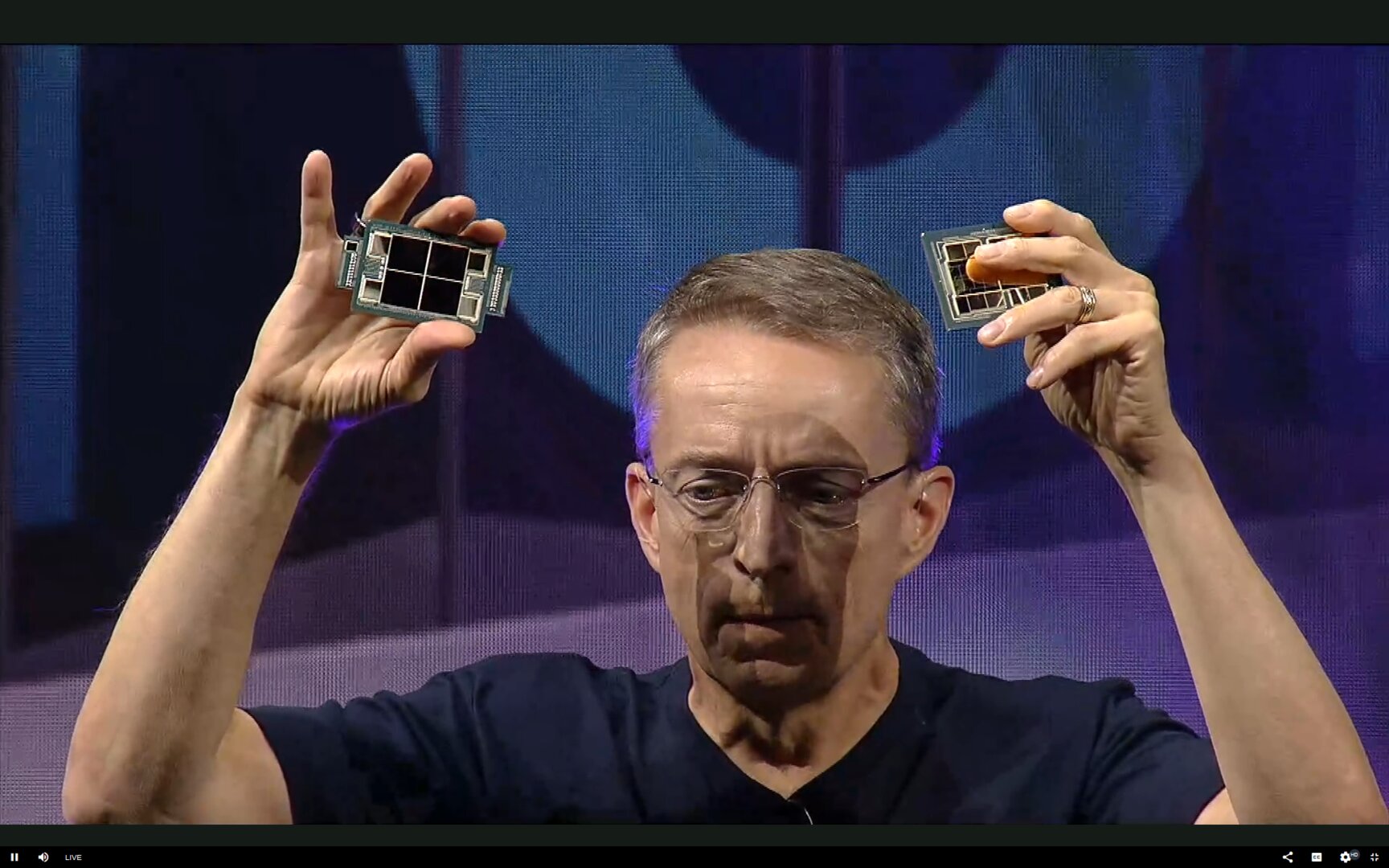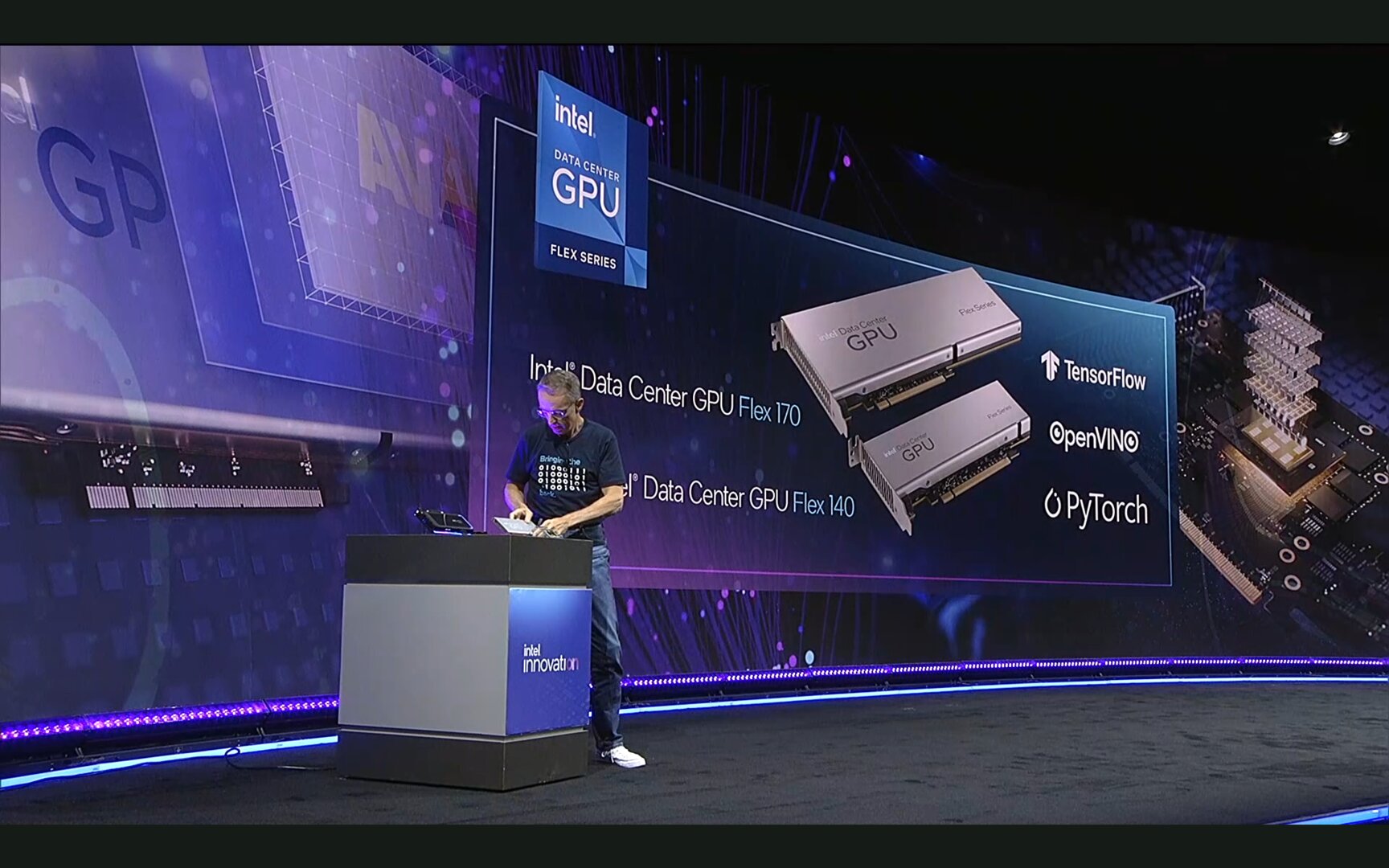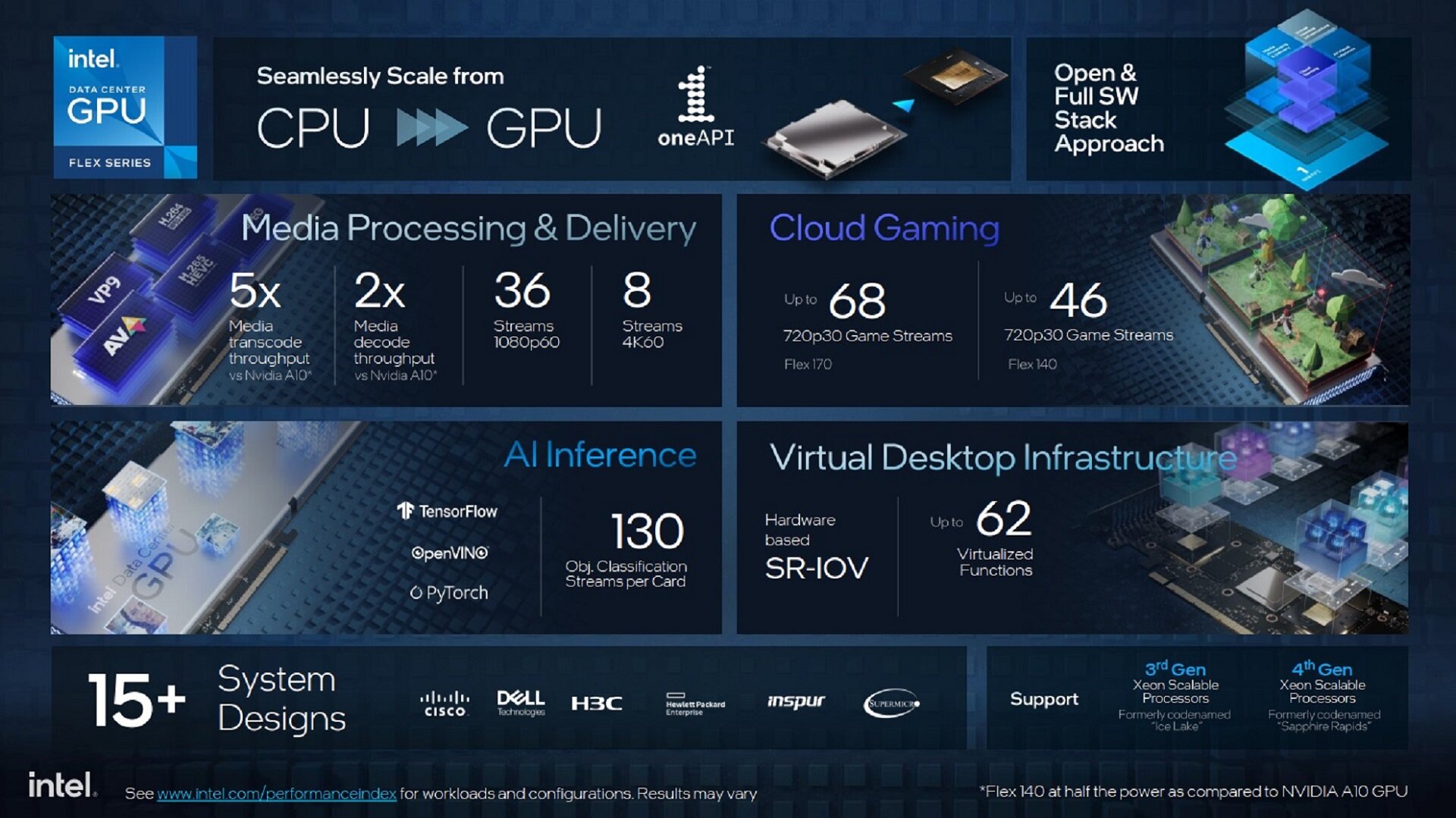Intel CEO Pat Gelsinger loves the big stage. But there he also has to sell significantly delayed products and there are quite a few of them. At the top of the list of delays are the Arc and Ponte Vecchio Xe GPUs and the Sapphire Rapids server CPU. Gelsinger therefore sold tripple steps as a success.
Ponte Vecchio is moving into Aurora – a year too late
And so Gelsinger announced at the start of the event on the big stage that the HPC accelerator solution Ponte Vecchio is now already being delivered for the flagship supercomputer Aurora. The fact that this exascale project is now many quarters behind schedule is of course not worth mentioning again.
 Sapphire Rapids with HBM and Ponte Vecchio (Image: Intel)
Sapphire Rapids with HBM and Ponte Vecchio (Image: Intel)Late, later, Sapphire Rapids
But that's also largely due to the Xeon processors, codenamed Sapphire Rapids, which have been pretty quiet around. Although Intel reported that developers now have access to these solutions in its own Dev Cloud, a real product launch is still not in sight.
Speaking of Sapphire Rapids. With the new Intel On Demand activation model, customers should be able to activate CPU features even after a purchase, Intel explains for more flexibility. This invention is not entirely new, software defined silicon has been around for some time, but the final implementation is now being sought. What exactly can be unlocked in the end, how and at what price should depend entirely on the model and class. This should be explained in more detail at the start.
Intel Arc is starting and should be retained
At least Intel was able to announce the availability or the launch of the discrete high-end solution in this generation at the event. The Arc A770 will be available on October 12th.
In a press question-and-answer session, CEO Gelsinger explained that graphics solutions will continue to be an issue at Intel, debunking rumors that discrete GPUs were already being sidelined. Now, for the first time, the portfolio is complete and it is about further development. Raja Koduri, head of the division, added that the development of the new, future hardware has already progressed in various stages, and that the software is an important cornerstone. However, Koduri often speaks primarily of oneAPI and the focus on the professional segment, but the fact that the discrete solutions in the desktop and notebook have so far failed due to very banal things should also be addressed.
Intel therefore also drew attention to the Data Center GPU, the new Flex Series. This was already teased in August and will now be available, Intel reports that all major OEMs should be on board.
-
 Intel Data Center GPU (Image: Intel)
Intel Data Center GPU (Image: Intel)
image 1 of 2
 Intel Data Center GPU (Image: Intel)
Intel Data Center GPU (Image: Intel)The cards rely on the basics of the Arc chips and primarily advertise the decoding and encoding features, above all, of course, AV1. The equipment also corresponds to certain Arc models, but the cards are not clocked quite as high and their TDP is limited. Intel does not name prices, the solutions primarily go to the large OEMs and ODMs.
-
 Intel Data Center GPU (Image: Intel)
Intel Data Center GPU (Image: Intel)
image 1 of 2
 Intel Data Center GPU (image: Intel)
Intel Data Center GPU (image: Intel)The professional sector will still have some time to nibble at Intel. Although those responsible emphasize like a mantra that things will get better, the problems of the past have not yet been completely solved or eliminated. Sandra Rivera, head of the division, emphasized this before the event in an interview with Bloomberg that is well worth reading. And Ronak Singhal, longtime chief architect for CPUs in this area at Intel in the USA, explained in advance in the press briefing that quality assurance is now being used, even if it means pushing a product even further.
The bottom line is probably what many already suspect: Sapphire Rapids will ultimately be a product of the year 2023, pre-deliveries for showcase projects excluded.
Update 09/29/2022 07:17 am
The journalist Nicole Hemsoth, who is respected in the supercomputer and HPC segment and, among other things, head of the pages The Register and The Next Platform, also left a bad hair on the group after the Intel show. In a multi-part rant via Twitter, she not only describes her thoughts, but also expresses the fears of the entire industry.
Intel Failed Science 🧵 (1/13)< /p>– Nicole Hemsoth (@NicoleHemsoth) September 28, 2022
In the end, she gets encouragement from many employees in the supercomputer area, including the head of the Riken supercomputer in Japan.< /p>
While I agree with 99% of your statements in the thread, I point out that 3 of 6 2022 GB finalists are on #Fugaku, only 1 Chinese 'exa'; moreover, all 3 finalists apps are bandwidth bound 2021, unlike being the true direction of #HPC rather than senseless pursuit of 'exa' FLOPS. https://t.co/hWbLqWAM6n
— Satoshi Matsuoka (@ProfMatsuoka) September 28, 2022